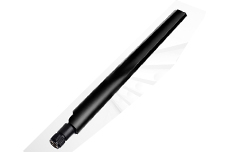Is the performance of GPS antenna mainly affected by the following aspects?
1, ceramic sheet: the quality of ceramic powder and sintering process directly affect its performance. The ceramic chips used in the market are mainly 25×25, 18×18, 15×15, 12×12. The larger the area of ceramic sheet, the larger the dielectric constant, the higher the resonance frequency and the better the bearing effect. Ceramic pieces are mostly square design, in order to ensure that the resonance is fundamentally consistent in the XY direction, so as to achieve the effect of average star. GPS antenna
2, silver layer: ceramic antenna surface silver layer can affect the antenna resonance frequency. The ideal GPS ceramic chip frequency accurately falls at 1575.42MHz, but the antenna frequency is very susceptible to the influence of the surrounding environment, especially when assembled in the whole machine, and the silver surface coating shape must be adjusted to adjust the frequency point to adhere to 1575.42MHz. Therefore, GPS machine manufacturers must cooperate with antenna manufacturers when purchasing antennas, and provide samples of the whole machine for testing.
3, feed point: ceramic antenna through the feed point to collect resonance signals and sent to the back end. Due to antenna impedance matching, the feed point is generally not in the exact center of the antenna, but is slightly adjusted in the XY direction. This impedance matching method is simple and does not increase the cost. Moving only in the direction of a single axis is called a single biased antenna, and moving in both axes is called a double biased antenna. Sucker antenna
4, amplification circuit: bearing ceramic antenna PCB shape and area. Due to the characteristics of GPS rebound on the ground, the performance of patch antenna can be brought into full play when the background is 7cm×7cm non-continuous ground. Although it is limited by elements such as appearance structure, it tries to adhere to a similar area and an average shape. The amplifier circuit gain must be selected in conjunction with the back-end LNA gain. The total gain of the GSC3F request signal of Sirf must not exceed 29dB before input, otherwise the signal will be susaturated and self-excited. Built-in antenna
GPS antennas have four important parameters: Gain, standing wave (VSWR), Noise figure and Axial ratio. Among them, special emphasis is placed on the shaft ratio, which is an important index to weigh the difference of signal gain of the whole machine in different directions. Since the satellites are scattered randomly over the hemispheres of the sky, it is important to ensure that the antennas have similar sensitivity in all directions. The axial ratio is affected by antenna performance, appearance structure, internal circuit and EMI.




